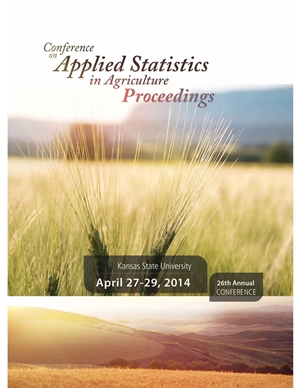Abstract
The southern root-knot nematode (SRKN) and the weedy perennials, yellow nutsedge (YNS) and purple nutsedge (PNS) are simultaneously-occurring pests in the irrigated agricultural soils of southern New Mexico. Previous research has characterized SRKN, YNS and PNS as a mutually beneficial pest complex and has shown their enhanced population growth and survival when they occur together. In addition, it was shown that the density of nutsedge in a field could be used as a predictor of SRKN juveniles in the soil. In addition to SRKN, which is the most harmful of the plant parasitic nematodes, in southern New Mexico other species or categories of nematodes were identified and counted. Some of them are not as damaging to crop plants as SRKN, and some of them may be essential for soil health. The nematode species could be grouped into categories according to trophic level (what nematodes eat) and herbivore feeding behavior (how herbivore nematodes eat). Then three ratios of counts each were calculated for trophic and feeding behavior categories to investigate the soil nematode community structure. These proportions were modeled as functions of the weed hosts YNS and PNS by generalized linear regression models using the logit link function and three distributions: the Binomial, Zero-Inflated Binomial (ZIB) and Binomial Hurdle (BH). The latter two were used to account for potential high proportions of zeroes in the data. Formulas for the probability mass functions and moments were developed for the ZIB and BH. The SAS NLMIXED procedure was used to fit models for each of three sampling dates (May, July and September) in the two years of an alfalfa field study. General results showed that the Binomial generally provided the best fit, indicating lower zero-inflation than expected, but that ZIB and BH are often comparable. Importance of YNS and PNS predictors varied over sample dates and ratios. Specific results for one selected ratio illustrate the differences in estimated probabilities between Binomial, ZIB and BH distributions as YNS counts increase.
Keywords
Nematodes, Nutsedge, Community Ratios, Binomial, Zero-Inflated Binomial, Binomial Hurdle
Creative Commons License

This work is licensed under a Creative Commons Attribution-Noncommercial-No Derivative Works 4.0 License.
Recommended Citation
Zbylut, Joanna; Murray, Leigh; Thomas, S. H.; Beacham, J.; Schroeder, J.; and Fiore, C.
(2014).
"MODELING RATIOS WITH POTENTIAL ZERO-INFLATION TO ASSESS SOIL NEMATODE COMMUNITY STRUCTURE,"
Conference on Applied Statistics in Agriculture.
https://doi.org/10.4148/2475-7772.1007
MODELING RATIOS WITH POTENTIAL ZERO-INFLATION TO ASSESS SOIL NEMATODE COMMUNITY STRUCTURE
The southern root-knot nematode (SRKN) and the weedy perennials, yellow nutsedge (YNS) and purple nutsedge (PNS) are simultaneously-occurring pests in the irrigated agricultural soils of southern New Mexico. Previous research has characterized SRKN, YNS and PNS as a mutually beneficial pest complex and has shown their enhanced population growth and survival when they occur together. In addition, it was shown that the density of nutsedge in a field could be used as a predictor of SRKN juveniles in the soil. In addition to SRKN, which is the most harmful of the plant parasitic nematodes, in southern New Mexico other species or categories of nematodes were identified and counted. Some of them are not as damaging to crop plants as SRKN, and some of them may be essential for soil health. The nematode species could be grouped into categories according to trophic level (what nematodes eat) and herbivore feeding behavior (how herbivore nematodes eat). Then three ratios of counts each were calculated for trophic and feeding behavior categories to investigate the soil nematode community structure. These proportions were modeled as functions of the weed hosts YNS and PNS by generalized linear regression models using the logit link function and three distributions: the Binomial, Zero-Inflated Binomial (ZIB) and Binomial Hurdle (BH). The latter two were used to account for potential high proportions of zeroes in the data. Formulas for the probability mass functions and moments were developed for the ZIB and BH. The SAS NLMIXED procedure was used to fit models for each of three sampling dates (May, July and September) in the two years of an alfalfa field study. General results showed that the Binomial generally provided the best fit, indicating lower zero-inflation than expected, but that ZIB and BH are often comparable. Importance of YNS and PNS predictors varied over sample dates and ratios. Specific results for one selected ratio illustrate the differences in estimated probabilities between Binomial, ZIB and BH distributions as YNS counts increase.


